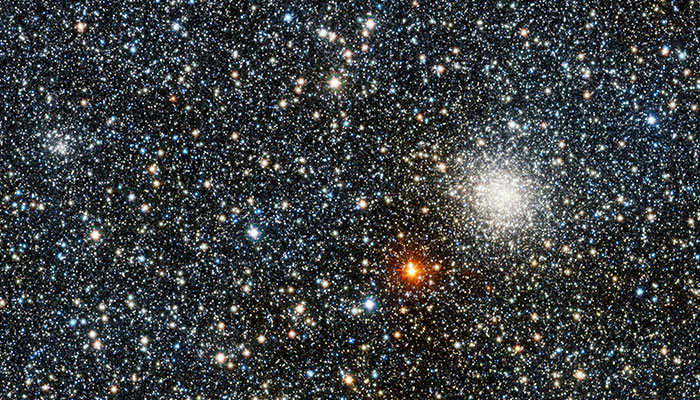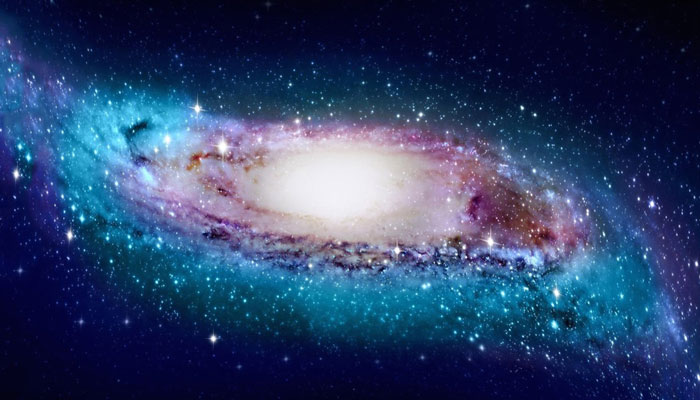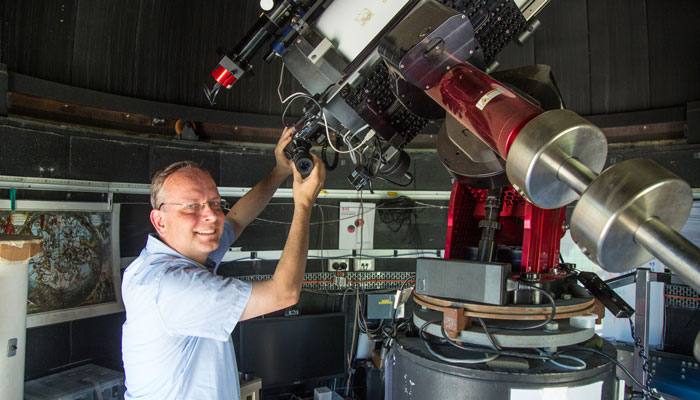Once upon a time, there was the Big Bang, and the Universe happened. But the early Universe was a very different place to what we see today. And as we learn more about the early Universe, we’re finding things about it that we didn’t know, and didn’t expect.
What the S5 (Southern Stellar Stream Spectroscopic Survey) team found is the remains of a ‘globular cluster’ – a ball of a million or so stars that orbit in the distant reaches of the Galaxy’s stellar halo (the ancient, relatively vacant outer surrounds of the Galaxy). There are about 150 of these clusters known in the Milky Way. But this one is different.
More than 2 billion years ago, the Galaxy’s own gravity tore the cluster apart, leaving a stream of stars in its wake. A closer look at the remains of the cluster revealed something intriguing about the chemical elements in those stars.
It should not be possible to find a globular cluster deficient in these elements – there is a minimum metallicity level needed for a cluster to form. And yet, here it was.
Almost all the elements in the Universe formed through nuclear fusion in the hearts of stars. When a star is born out of a cloud of gas and dust, gravity compresses its core, which heats up. As the temperature rises, it gets hot enough to fuse hydrogen into helium, generating energy in the process.
In time, as the star ages, the same nuclear fusion starts to create a new element – fusing helium atoms together to form carbon. In massive stars, this fusion cycle continues: rinse, repeat, add two atoms together, get a new, heavier element.
In this way, nuclear fusion inside stars transforms the lightest elements, like hydrogen and helium, into heavier elements like calcium and iron. Supernova explosions and winds from the surfaces of stars then distribute these elements throughout the environment, leaving traces in the interstellar medium and providing materials to build new stars.
Phoenix Stream unusually metal-poor
Astronomers can use spectroscopy to work out the chemical composition (sometimes called metallicity) of stars; what they find is that older generations of stars, which formed in the early Universe when smaller amounts of heavy elements existed, tend to have lower metallicities than younger stars, born after more heavy elements had been created.
So when Zucker and his colleagues, using the Anglo-Australian Telescope at Siding Spring measured the velocities of a stream of stars in the Phoenix constellation, and found that they moved like the remnants of a globular cluster, they also analysed the chemical elements in the stars, and were surprised to find that they were markedly different from any in the other globular clusters in the Milky Way – they had a significantly lower metallicity.
Study lead author, University of Sydney PhD student Zhen Wan, explains: “Even though the cluster was destroyed billions of years ago, we can still tell it formed in the early Universe from the composition of its stars."

Current theories on globular clusters suggest that they can only form in environments where there has been some minimum amount of star formation, and because new stars incorporate the heavier elements formed in previous generations of stars, it should not be possible to find a globular cluster deficient in these elements – in effect, there is a minimum metallicity level needed for a cluster to form.
And yet, here it was.
The last of its kind?
The Phoenix Steam progenitor is well below the theoretical minimum metallicity, lacking the amounts of heavy elements seen in other globular clusters, and presenting an intriguing new question for our ideas of how globular clusters are born, and the conditions needed for their birth. “This stream comes from a cluster that, by our understanding, shouldn’t have existed,” says Zucker.
It may be, says S5 team leader Ting Li, from Carnegie Observatories, “that the Phoenix Stream represents the last of its kind, the remnant of a population of globular clusters that was born in radically different environments from those we see today."
Or it may be something else entirely. “There is plenty of theoretical work left to do, and there are now many new questions for us to explore about how galaxies and globular clusters form, which is incredibly exciting,” says the University of Sydney’s Professor Geraint Lewis.
Added Zucker: “A great aspect of this discovery is that it was based on observations made with the 45-year-old Anglo-Australian Telescope, the largest optical telescope in Australia. This facility – funded by a consortium of universities – is ideal for the S5 project, and after decades in service it remains at the forefront of astronomical research.”
Daniel Zucker is an Associate Professor in Macquarie University's Department of Physics and Astronomy.



